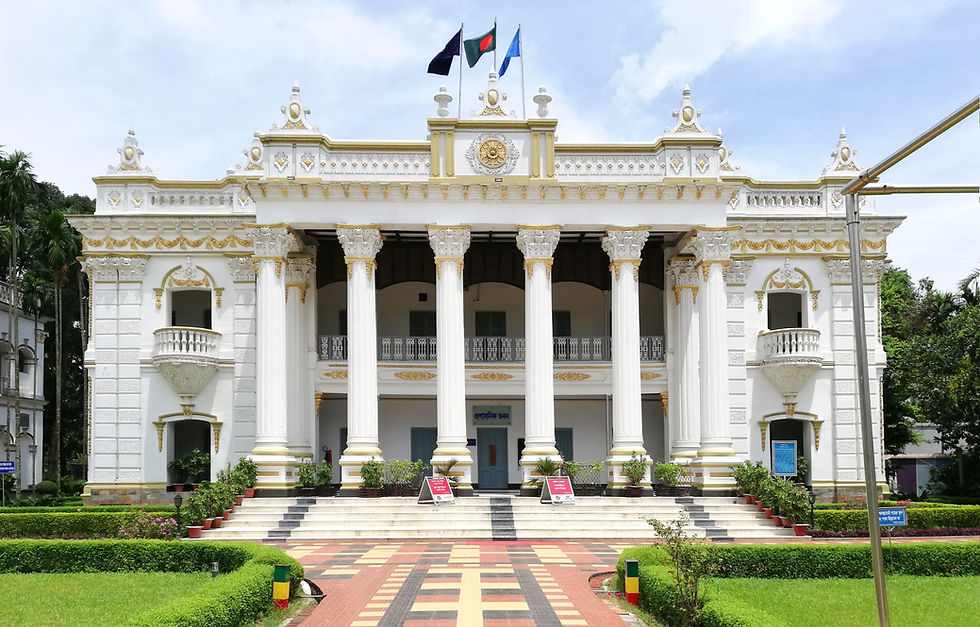Choto Katra: Traveling Back in Time in the Mughal Era of Dhaka
- Niharika Momtaz Production

- Dec 3
- 2 min read

Dhaka—the lively capital of Bangladesh—has many historic sites from the Mughal period. One such historical site that often goes unnoticed is Choto Katra. Built in 1663 by the Mughal governor Shaista Khan, Choto Katra was an abode for travellers and merchandisers. It may not be as popular as some other temples and monuments in Dhaka. However, there is no doubt that Choto Katra boasts a colourful past, which is still, to this day, an important asset for the city.
What is Choto Katra?
Choto Katra –'a small inn' as the name suggests, was built at a time when Dhaka was transformed into an administrative and commercial centre during the period of the Moghul dynasty. The building was constructed with the concept of "caravansary," meaning that it was intended mainly for travelling persons, especially for trade ones. Since it was adjacent to the river Buriganga, the building acted as a stopping place for people who needed to travel on boats, which was very common during that period.
Architectural Highlights
Choto Katra's architectural view, a unique blend of simplicity from the Mughal era and influences from Persian, Indian, and Central Asian styles, is a sight to behold. The rectangular structure with a spacious courtyard at the centre, large rooms for traders, and ground floors for cattle and goods pens all contribute to its unique charm. The levelled floors with more luxurious accommodations add to its allure.
In the case of Choto Katra, both striking entrances were present: one oriented east and the other staggering minarets towards the west. The carvings and drawings used to decorate the two gateways were impressive in terms of that time's energy. The arches and domes that crowned these gateways are characteristic features of Mughal buildings, which are always elegant and majestic.
The Decline of Choto Katra
Over time, Choto Katra has struggled to maintain itself, unlike other well-known Mughal monuments in Dhaka, such as Lalbagh Fort and Ahsan Manzil. The site has undergone neglect, and the construction of modern buildings has encroached upon its space, resulting in the loss or modification of parts of the original structure. As a result, much of the beauty of Choto Katra has been compromised, with only a few remnants remaining.
It is sad to note that this neglect has resulted in Choto Katra not being remembered even by the natives. It is tucked away in the Old Dhaka traffic, and with all the progress that is going on in the region, it is likely to be overlooked.
Why Choto Katra Matters
Choto Katra, despite its current state, remains a significant piece in the historical puzzle of Dhaka. Its conservation is crucial for the preservation of the city's rich history and identity. If Choto Katra is restored and well-maintained, it will serve as a valuable resource for future generations, allowing them to experience and understand the Mughal era and the diverse architectural designs found in Dhaka.
In conclusion, Choto Katra is not just a dilapidated building; it is a precious relic of Dhaka's history. While it may not enjoy the same popularity as other Mughal sites, its preservation is equally important. Choto Katra's unique blend of architectural styles and its historical significance make it a site worth preserving for future generations.








Comments